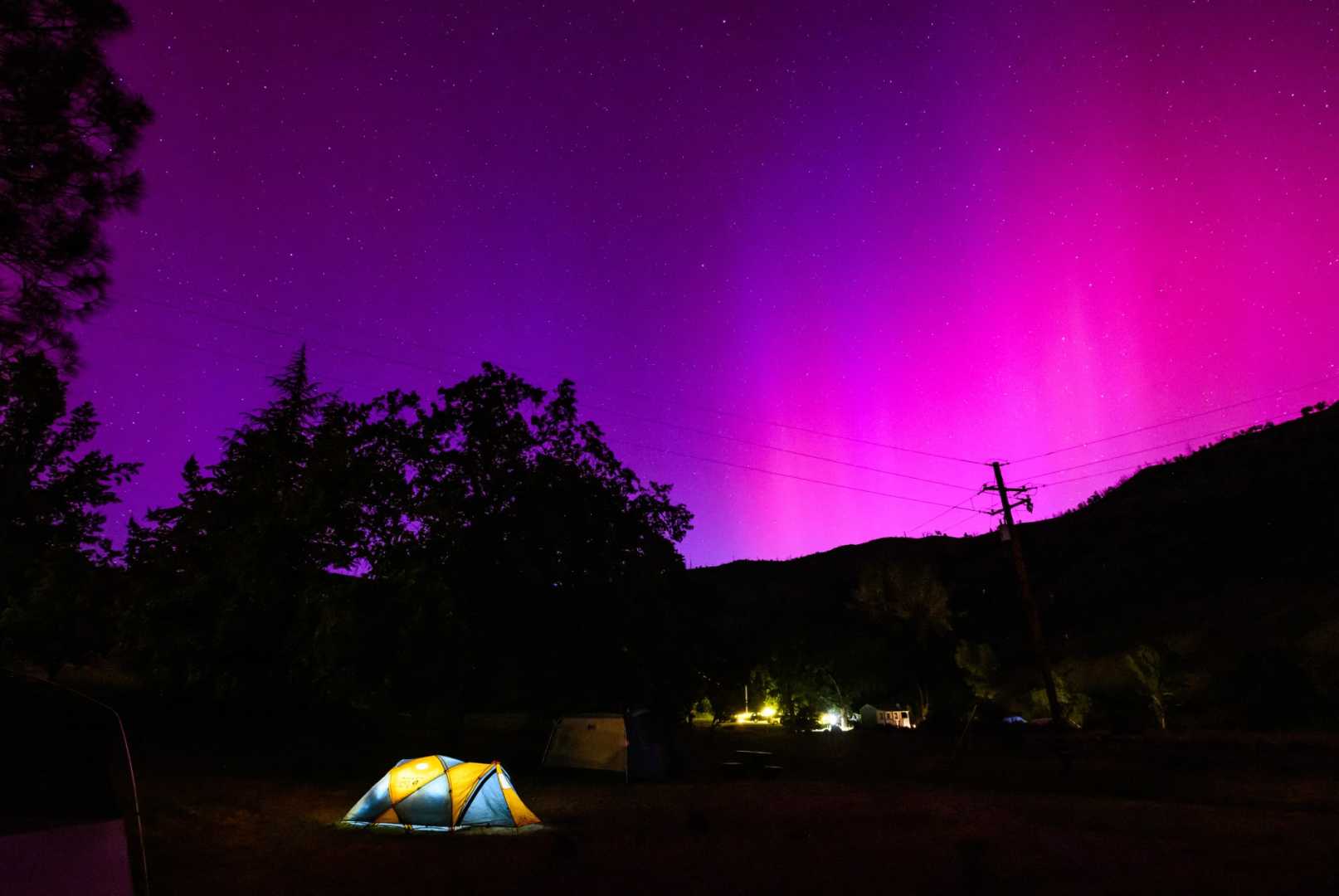News
Powerful Solar Storm May Cause Auroras in Unprecedented Areas

A powerful solar event is poised to cause colorful auroras visible in unexpected areas of the United States, including Alabama and Northern California. This phenomenon results from a significant solar flare and associated coronal mass ejection (CME) projected to reach Earth, as reported by the National Weather Service.
The predicted severe solar storm has been classified as level 4 on a scale ranging from 1 to 5. Officials from the Space Weather Prediction Center indicated potential disruptions to communications, power grids, and satellite operations. The storm is expected to impact Earth between early morning and midday on Thursday, with effects potentially extending into Friday.
Traveling at speeds exceeding 2.5 million miles per hour (approximately 4 million kilometers per hour), the storm’s full intensity and characteristics will only become apparent upon reaching the Deep Space Climate Observatory and the Advanced Composition Explorer satellites, stationed a million miles from Earth. These observatories will relay insights on the storm’s speed and magnetic force, providing Earth with 15 to 30 minutes notice before the storm’s arrival, according to Shawn Dahl, service coordinator for the Space Weather Prediction Center.
Recent solar activity includes several X-class flares from the sun, coinciding with CMEs. These events involve massive releases of ionized gas and magnetic fields from the sun’s outer layers, potentially leading to geomagnetic storms when directed at Earth. These storms can severely disturb Earth’s magnetic field, affecting infrastructure both on Earth and in orbit.
Preparations are underway to counteract the effects of the storm, as noted by Dahl during a news briefing. The Federal Emergency Management Agency, alongside North American power grid and satellite operators, has been alerted to brace for possible impacts.
The sun’s current phase, nearing its solar maximum, corresponds with heightened solar activity. This increased activity has led to a greater chance of auroras, typically near the poles, appearing further south, possibly as far as southern U.S. states. However, the scale and reach of this upcoming storm remain unpredictable, Dahl explained.
To monitor potential auroras, the National Oceanic and Atmospheric Administration recommends using their aurora dashboard to check visibility predictions. Skywatchers may notice auroras earlier in the evening during this part of the year, with cameras potentially capturing displays not visible to the naked eye.
While NOAA officials do not anticipate this storm to eclipse the G5 storm in May, previous G5 events have caused notable disruptions, such as power outages and damage to infrastructure. The solar storm in May was one of the most effectively managed in history, highlighting improvements in preparedness. This event underscores ongoing monitoring as solar activity continues to surge beyond its cyclical maximum, potentially extending into 2026.












